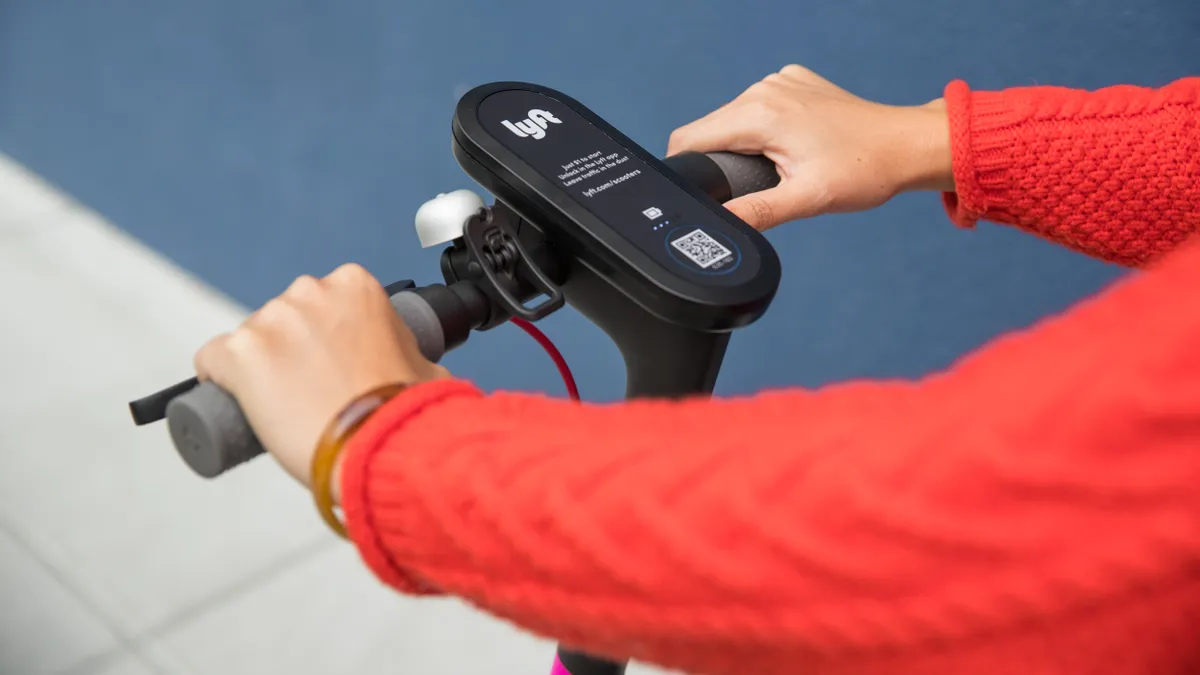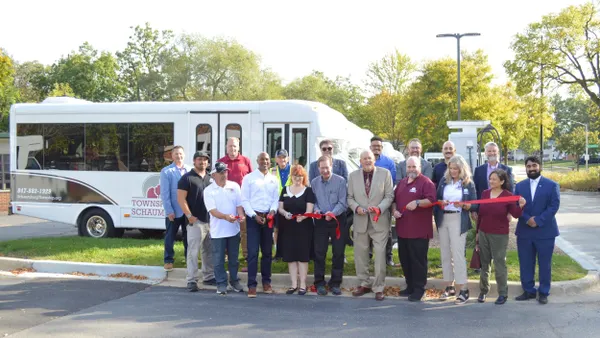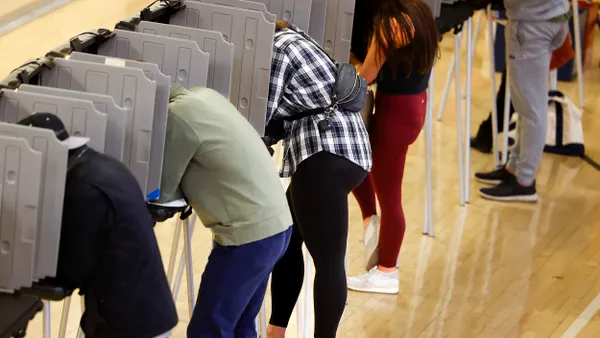Dive Brief:
- Lyft added bike lane information to its app this week in every market where it has shared bike and/or scooter programs.
- Protected bike lanes will appear on the map as solid green lines while bike-friendly routes will be dotted green. The lanes appear on a static map and not through a real-time route-planning function, a Lyft spokesperson told Smart Cities Dive via email.
- The company believes the feature will encourage more people to "choose two-wheeled transportation," which Lyft says improves the environment, eases traffic congestion and makes cities more livable.
Dive Insight:
Unfamiliarity with bike-friendly routes cause some people to forego using bikes or scooters in urban areas due to safety concerns. This is especially true for bike- or scooter-share users who are only occasional riders. Lyft's new app feature is a way for those riders to find areas with infrastructure that makes two-wheeled transportation safer.
As an ancillary benefit, the clearly marked lanes could help keep scooter users off sidewalks, which is a requirement in most cities. Along with improperly parked devices creating clutter, users riding on sidewalks is among the top complaints cities receive about scooters.
The Lyft spokesperson indicated the bike lane feature also could hold implications for city transportation planning. The solid and dotted lines clearly illustrate cities' progress on creating bike infrastructure and where gaps exist.
There has been a push recently to improve bike infrastructure in U.S. cities, especially as more mobility options emerge. This year, Cambridge, MA became the first U.S. city to require that protected bike lanes be installed anytime a road in the protected network in the city's bike plan is reconstructed. San Francisco's mayor instructed the transportation agency to double its production of protected bike lanes over the next two years. And New York's mayor unveiled a plan to improve cycling infrastructure and cyclist safety following a spike in cyclist deaths on city streets this year.
The need for better road infrastructure is well known and included in many cities' Vision Zero plans. Improvement efforts aren't limited to the public sector, either. Scooter company Bird had a program to help cities pay for protected bike lanes and other infrastructure improvements, but it ended the program last month, citing a misuse of funds.
Although not specifically related to bike infrastructure, Domino's Pizza has a "Paving for Pizza" initiative offering grants to cities for paving potholes. That program is beneficial for boosting ease of travel and safety for all street users.












